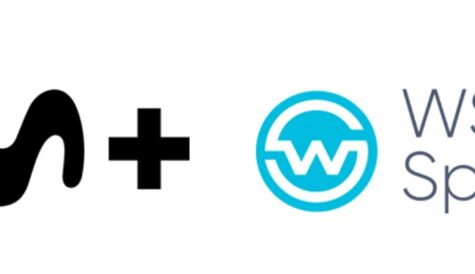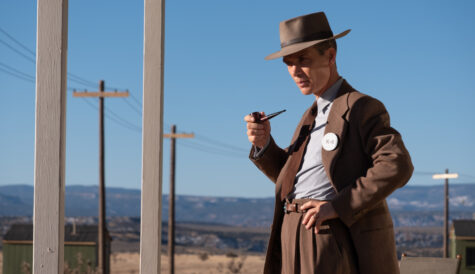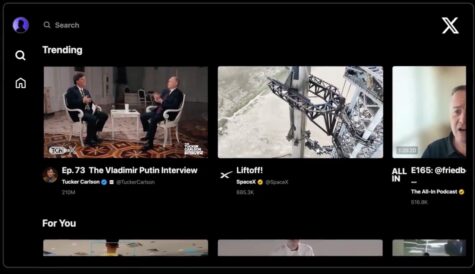Does BritBox signal the end of the linear EPG?
 The BBC and ITV have announced (again) their plan to rule the VOD world with yet another SVOD store selling back catalogue box-sets, and in the latest news, ITV says they may make some new original content and add that too. As the global media industry excitement at this news calms down, and Netflix and Amazon’s share prices recover, perhaps it’s time to look quite carefully at where the value in those archives really sits.
The BBC and ITV have announced (again) their plan to rule the VOD world with yet another SVOD store selling back catalogue box-sets, and in the latest news, ITV says they may make some new original content and add that too. As the global media industry excitement at this news calms down, and Netflix and Amazon’s share prices recover, perhaps it’s time to look quite carefully at where the value in those archives really sits.
Despite the growth in viewing and revenues for SVOD services, 2018 was the busiest year yet for linear channel EPG trading on the Sky platform, with record prices achieved and a constant flow of transactions involving broadcasters from the biggest to the very smallest.
Yet despite this, expert industry pundits and on-line gurus are calling out, as they have wrongly for at least the last decade, the end-of-days for the linear channels. Hence BritBox: the latest attempt to monetise libraries directly and savage the growth plans for those pesky new platforms by denying them access to Only Fools and Horses and Minder.
I think not only are they wrong, but that they are missing the most powerful factor at work here, which is that these libraries work best where viewers come upon them by chance: interfaces, and EPGs and choice algorithms determine the value of these libraries, not a quaint libraryI suspect that new commercial markets in OTT and VOD platform App-based EPGs are only just over the horizon. Teen American audiences are not searching for Poirot or Miss Marple (both currently on the front page of the US site) and if BritBox is intended to be an SVOD service for older people, it hasn’t made that clear.
Since 2003, the UK’s largest pay TV platform, Sky, has seen non-PSB channels choose their own prominence on the platform through a system of commercial trading of channel numbers, or EPG numbers as they have come to be known. These channel numbers are now significant assets owned by the broadcasters themselves, and which they can and do frequently buy or sell. It started as a secret, almost black, market, with mysterious moves appearing on the platform, and both buyers and sellers often agreeing with Sky to keep the nature of these deals confidential.
When this market started, the lawyers and commercial channel managers at Sky felt a little uneasy about such trades taking place on their platform; a platform in which they had invested billions to launch. At that time EPG trading was a secret business which only a few insiders had worked out how to do. Quite unexpectedly however, over the next five years both Sky and broadcasters, with a little self-interested help from one or two independent brokers, found that this new system of trading channel numbers seemed to work and the trades became increasingly visible. When Sky themselves bought their first position on the open market in the wake of the Setanta collapse, it was clear that this was now the established and acceptable way to determine the layout and prominence of the Sky EPG
The existence of, and the subsequent proliferation of +1 services was a unique development in the UK, and it was driven by the value that the EPG market had created in the channel numbers. As a method of maximising the value of content, these services proved hugely successful in delivering incremental ratings from existing programming that was already on air one just a click away.
In 2017 Sky started another consultation which sought to improve the platform and the viewer experience which saw time-shift and secondary channels moving out of the main Entertainment genre. The new layout has created a clear Entertainment Premier League where the top one hundred now includes factual entertainment channels, which were previously situated in a separate part of the EPG. If the drift away from linear viewing had created as profound an impact as many market experts suggest, then the value of these positions would have dropped, whereas in fact the opposite proved to be the case. The scale of the investment in the ‘new look’ Entertainment section surprised many.
In the last two years alone, broadcaster investment in EPG positions on Sky’s platform has exceeded £50 million (€58 million); this is the highest level of investment in EPG assets since the market began. New players to the market, if they are serious, need to acquire prominent space in the right section, just as Smithsonian Channel has done this month.
In fact, I would argue that the existence and prominence of the linear channel remains the key driver for time-shifted viewing on VOD and catch-up services.
At the moment the commercial forces behind the user interfaces on VOD and OTT services are invisible handshakes and confidential agreements between, for example, YouTube, Netflix, Amazon and their many content partners. How the BBC and ITV will manage the user interface between them is an unanswered question, but I detect a shift towards a more linear experience on these interfaces; notice, for example, the way Netflix now starts the content once your cursor has sat on the listing.
I believe that the reality is viewer behaviour has and will continue to want the curation and delivery of content in what looks and feels like a linear experience. I still want to flick up and down and find content that appeals to me, even if my next step is then to find it in an SVOD or pay platform and binge. On some smaller OTT platforms, you can now easily see the categorisation of content into binge sections that five years ago would have been channels: crime, travel, adventure, history. The next logical step here is the creation of linear channels in a VOD world.
So rather than soothsaying the end of the linear EPG, I predict that the newer platforms and interfaces will shortly start to emulate it, and the birth of real channels in SVOD platforms will be the next big thing. I believe that channels that are curated and delivered in a traditional way will start to appear on VOD platforms, with names like Netflix One, Amazon Wildlife or YouTube Sports 3, and I know that the first thing I would do when watching Now TV would be to flick through the linear experiences if they existed, happy to watch a channel that had Black Mirror on at 9pm or The Good Doctor on at 10 and then allowed me to click away to the box set. If that is right, the new BritBox service will shortly need to address how the UKTV model of driving mainstream linear audiences out of a high-quality library works on BritBox One. Unpicking the rights agreements on that will be extremely complex.
As a managing partner of the UK’s largest broker of EPG positions, my own view on this is obviously and biased, but after ten years of hearing that the traditional EPG is dead, and then witnessing the biggest year of EPG trading in history, I suspect that the market may be slowly coming round to my way of thinking.
Ed Hall is managing partner at Expert Media Partners.



